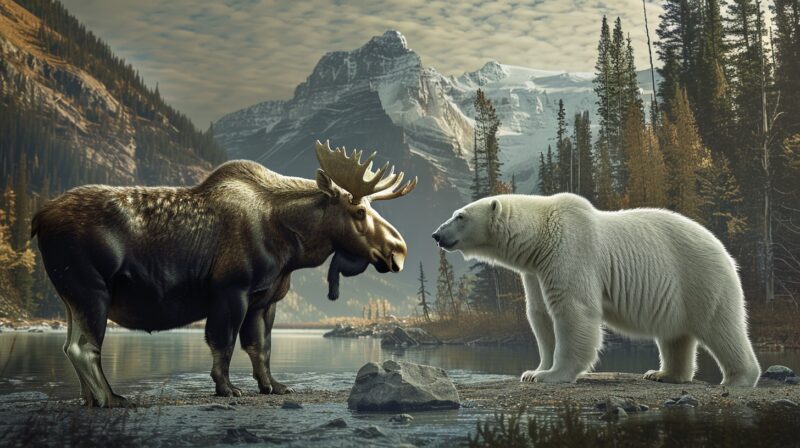North America, a vast continent stretching from the icy realms of Canada and Greenland to the tropical landscapes of Mexico, is home to an incredible diversity of habitats.
This variety of ecosystems, from dense forests and towering mountains to expansive deserts and open plains, provides a home for a wide array of wildlife, including some of the largest animals on the planet.
In this exploration, we’ll discover the giants of North America, showcasing the 10 largest animals that roam this continent, from the majestic right whale to the sturdy musk ox.
10. Musk Ox
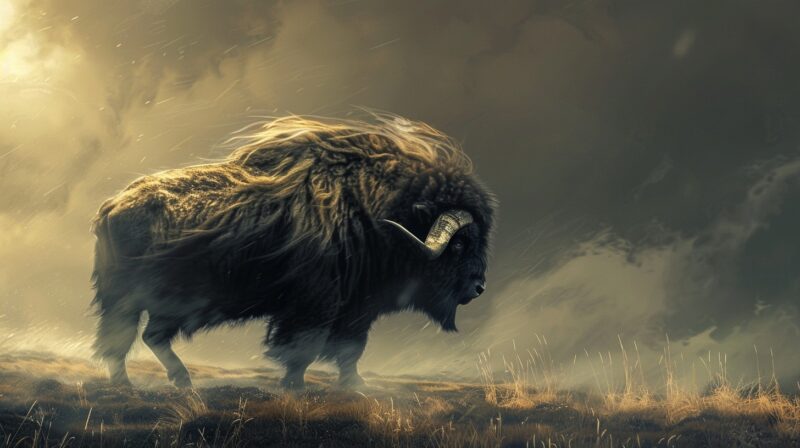
Starting our list is the musk ox, a robust member of the Bovidae family, tipping the scales at up to 900 pounds. Native to the Arctic regions of Greenland and Canada, these creatures are more closely related to sheep and goats than oxen. With their thick, dark coats and intimidating curved horns, musk oxen are a sight to behold.
They are herbivores, living in herds where age dictates hierarchy, and are known for their defensive strategies, forming protective circles around the vulnerable when threatened. In the harsh Arctic environment, their thick coat is essential for insulation against the cold.
Musk oxen have a unique social structure that emphasizes the protection of young and weak members. Their ability to survive in extreme conditions highlights their importance in the Arctic ecosystem.
9. Polar Bear
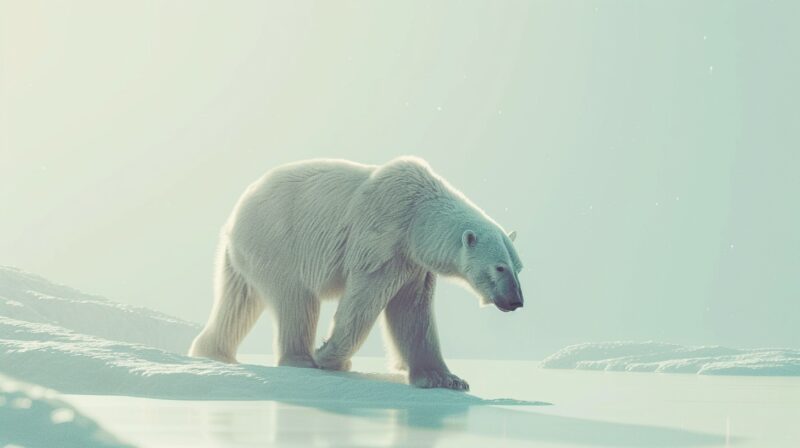
Next, we have the polar bear, a symbol of the Arctic’s wild beauty. Male polar bears can weigh around 990 pounds, making them the largest bear species. Despite their white fur, these bears have black skin, a feature that aids in absorbing heat. Polar bears are exceptional swimmers, relying on sea ice to hunt their primary prey, seals.
However, climate change poses a significant threat to their survival, classifying them as a vulnerable species. Their dependence on sea ice makes them particularly susceptible to global warming.
Polar bears have an acute sense of smell, detecting seals nearly a mile away. Conservation efforts are crucial to ensure their survival amidst rapidly changing Arctic conditions.
8. American Crocodile
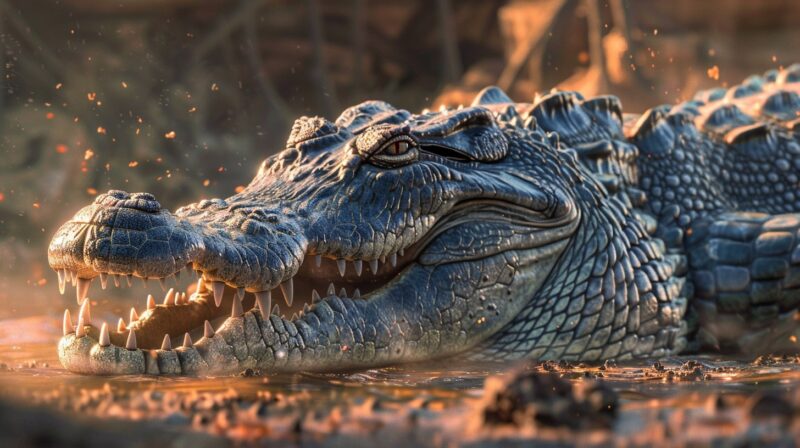
The American crocodile, with males averaging around 1,000 pounds, is one of the largest crocodile species. Found in Florida, Cuba, and Jamaica, these crocodiles are adept at both land and water hunting, feeding on a variety of prey. Their grey-green back and broad snout distinguish them from other crocodile species.
American crocodiles prefer brackish or saltwater habitats, making them unique among crocodilians. They are less aggressive than their Nile or Australian counterparts. Conservation efforts have helped their numbers increase, moving them from endangered to a lesser threat category.
7. Canadian Horse
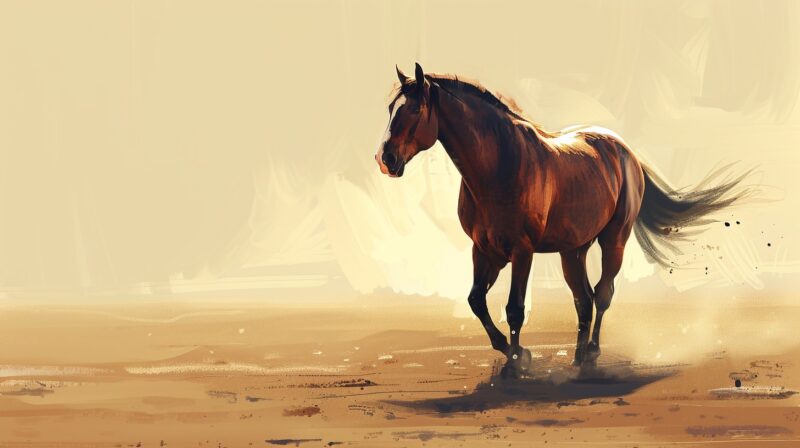
The Canadian horse, weighing between 1,000 and 1,400 pounds, is a testament to the country’s equine heritage. Originating from horses sent by Louis XIV in the 17th century, this breed is known for its strength, muscular build, and calm temperament.
Despite their historical significance, Canadian horses are critically endangered today. They played a crucial role in the development of Canada, serving in various capacities from farm work to transportation. The breed’s resilience and versatility make it a national treasure.
6. Moose
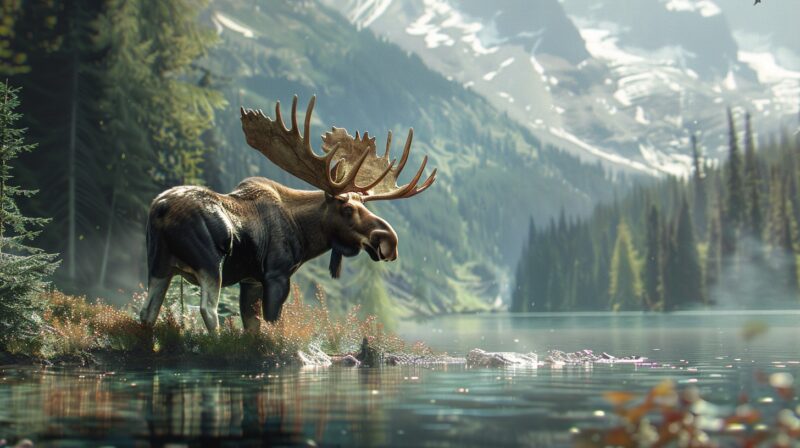
Moose, the largest members of the deer family, can reach weights of 1,500 pounds. These solitary giants are recognized by their dark brown fur, distinctive dewlap, and massive antlers. Moose are versatile swimmers and formidable in defense, with bears and wolves as their main predators.
They are browsers, feeding on leaves, bark, and twigs of both deciduous and coniferous plants. Moose are known for their ability to navigate through deep snow and swim long distances. Their presence indicates a healthy forest ecosystem, making their conservation vital for biodiversity.
5. American Bison
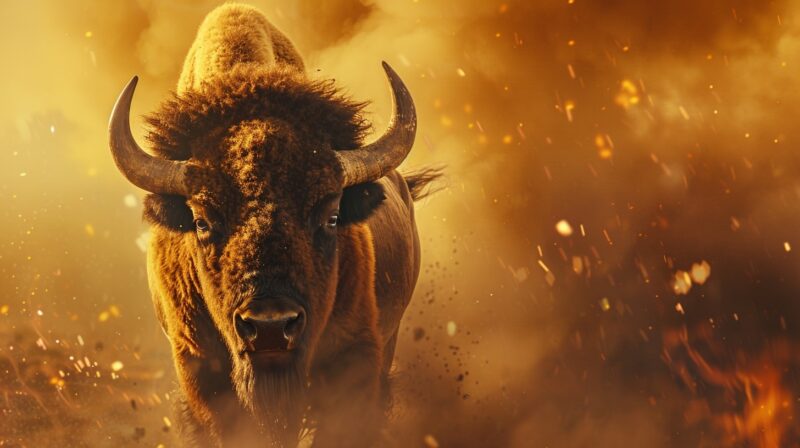
The American bison, or buffalo, is the largest land mammal in North America, with males weighing up to 2,100 pounds. Once roaming the continent in vast herds, bison are now primarily found in national parks. They are known for their dark brown coats, short curved horns, and the iconic hump on their shoulders.
Bison play a crucial role in the grassland ecosystem, helping to maintain healthy prairies. They have a strong social structure, forming herds that provide protection and communal care for calves. Conservation efforts have significantly recovered their populations from near extinction.
Adapting to a diet that significantly shapes their habitat, bison are among the diverse group of plant-eating giants that contribute to the ecological balance of their environments.
4. Gray Whale
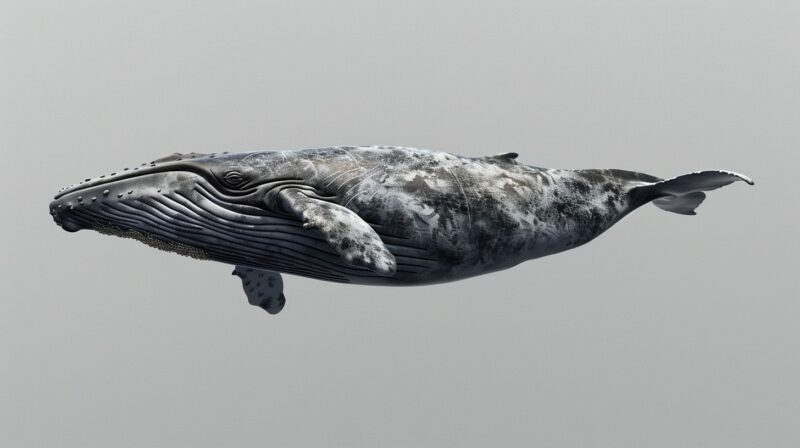
Weighing around 60,000 pounds, the gray whale represents the marine giants of North America. These baleen whales are known for their mottled gray skin and unique feeding technique, scooping sediment from the ocean floor to filter out crustaceans.
Gray whales undertake long migrations, traveling thousands of miles between feeding and breeding grounds. They are often seen close to shore, making them popular among whale watchers. Their migration routes and behaviors contribute to our understanding of marine ecosystems and the importance of ocean conservation.
3. Humpback Whale
The humpback whale, with its impressive weight of 66,000 pounds and length of around 20 feet, is famous for its breathtaking breaches. These baleen whales are found in oceans worldwide, including the waters around North America, where they feed on krill and small fish using a unique bubble netting technique.
Humpback whales are known for their complex songs, which can last for hours and are believed to be used in mating rituals. Their acrobatic displays and vocalizations make them one of the most studied whale species. Protecting their habitats is essential for their survival and the health of marine ecosystems.
2. Bowhead Whale
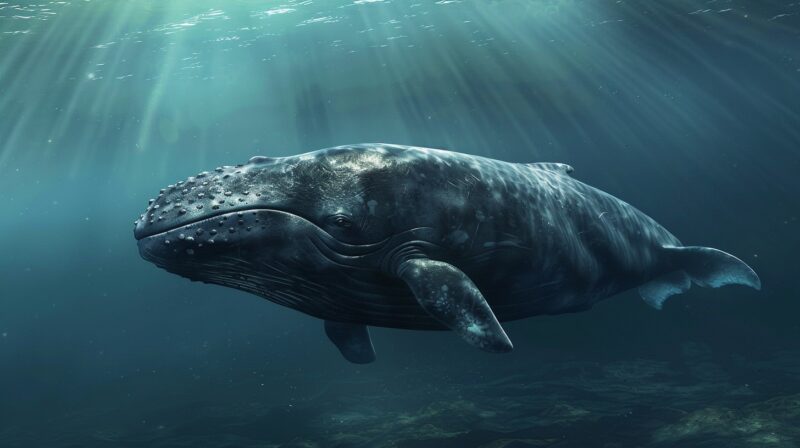
The bowhead whale, reaching weights of around 120,000 pounds, is adapted to the icy waters of Canada and Greenland. Recognizable by its large head and white chin, the bowhead uses its massive skull to break through ice up to seven inches thick. It has the longest baleen plates among whales, used to filter feed in the cold Arctic waters.
Bowhead whales have an impressive lifespan, living over 200 years. They are crucial to the Arctic marine environment, influencing its ecological balance. Despite their resilience, bowhead whales face threats from climate change and habitat loss, underscoring the need for focused conservation efforts.
1. Right Whale
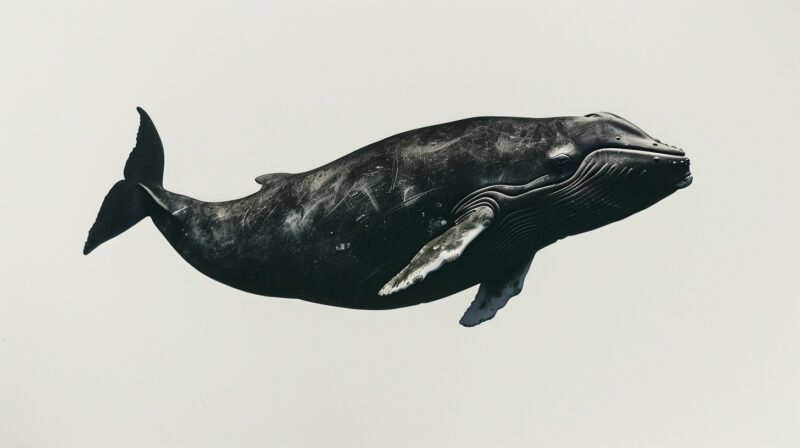
Topping our list is the right whale, with the North Atlantic species reaching up to 155,000 pounds and the North Pacific species even heavier at 175,000 pounds. These baleen whales are critically endangered, facing threats from vessel strikes, entanglement in fishing nets, and climate change.
They are distinguished by their large size, black coloration with patches of white, and their feeding technique of skimming zooplankton with their mouths open. Right whales have no natural predators, but human activities have significantly impacted their populations.
They are slow reproducers, making their recovery challenging. Conservation initiatives are crucial to protect these gentle giants and ensure their presence in the oceans for future generations.
FAQs
What is the main diet of a musk ox?
Musk oxen primarily eat grasses, mosses, and Arctic willows. They are herbivores, which means they only eat plants.
How do polar bears adapt to their Arctic environment?
Polar bears have several adaptations, including a thick layer of fat for insulation, black skin to absorb heat, and white fur to camouflage with the snow. Their large paws also help distribute weight when walking on thin ice.
Can American crocodiles live in freshwater?
Yes, American crocodiles can live in both freshwater and saltwater environments, but they prefer coastal, brackish, and saltwater habitats.
What makes the Canadian horse unique compared to other horse breeds?
The Canadian horse is known for its resilience, strength, and versatility, traits that stem from its historical use in harsh Canadian climates. It also has a calm temperament, making it an excellent work and riding horse.
Why are moose considered good swimmers?
Moose are excellent swimmers because of their large size, which gives them buoyancy, and their long legs, which allow them to wade deep into water. They can swim several miles and even dive to eat aquatic plants.
What is the significance of the humpback whale’s song?
The humpback whale’s song is a complex series of sounds used in communication and, during the breeding season, by males to attract mates or assert dominance. These songs can be heard over great distances underwater.
Summary
We’ve seen some of the biggest animals that call North America home. From land dwellers like the bison and moose to sea giants like the right whale, these animals are impressive not just because of their size but also because of how they adapt to their surroundings.
Knowing about these animals helps us understand the natural world better. It’s important to remember that these animals, and the places they live, need protection to ensure they remain part of North America’s wildlife.
Related Posts:
- 11 Largest Whales of North America: Unveiling the…
- 18 Largest Birds Of North America - How They Survive…
- 10 Slowest Animals in North America - Slow and Steady
- How Big Do Beavers Grow? Exploring the Growing Giants
- How Do Animals Get Energy? Nature's Powerhouses
- How do Animals Communicate Through Sound? - Sound of Nature


